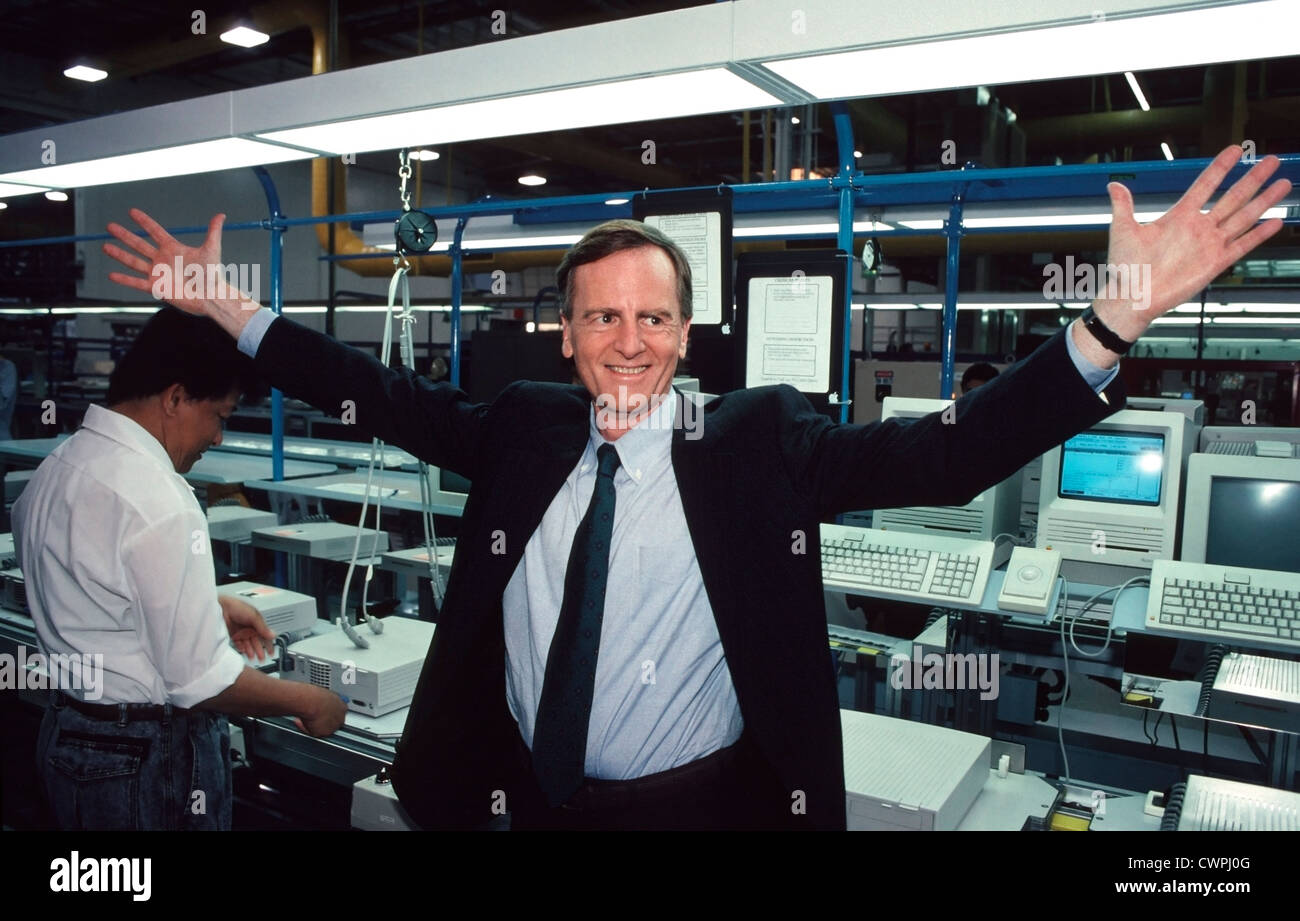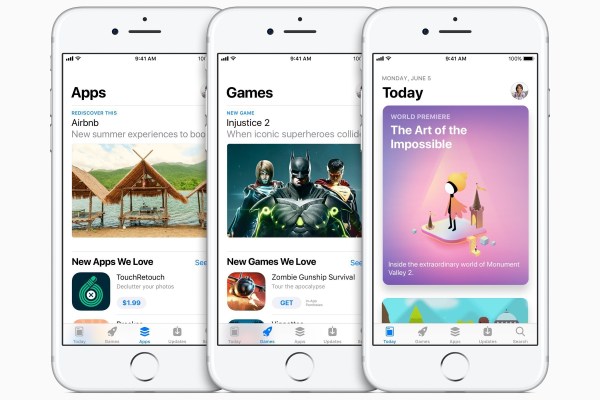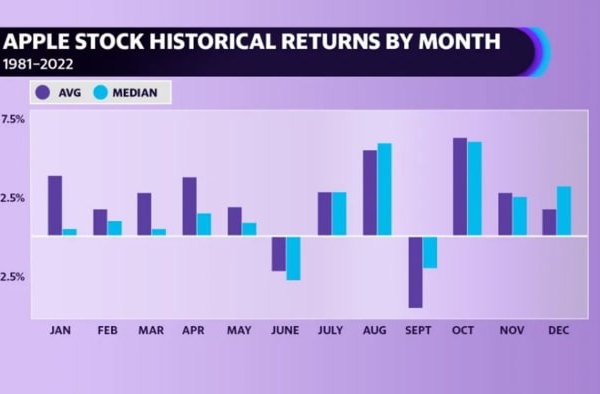
John Sculley, the former president of PepsiCo, made a pivotal shift in Apple history when he took the reins as Apple’s third CEO on April 8, 1983. At the time, he had no experience in the technology sector, but was drawn to the company by Steve Jobs, who famously challenged him with the enticing question, “Do you want to spend the rest of your life selling sugared water, or do you want a chance to change the world?” This bold move marked the beginning of a new chapter in the Apple CEO transition, as Sculley aimed to apply his marketing prowess to the innovative world of personal computing. With a lucrative compensation package that included a million-dollar salary and significant stock options, Sculley’s biography became a significant part of Apple’s narrative. His leadership would eventually lead to both groundbreaking successes and dramatic conflicts, particularly with Jobs, forever changing the dynamics of the company and setting the stage for its future.
In the realm of corporate leadership, John Sculley emerged as a transformative figure in the tech industry, especially known for his affiliation with Apple Inc. Transitioning from a successful career as PepsiCo’s chief executive, he embraced a formidable challenge by becoming Apple’s CEO in the early 1980s. His tenure not only affected the company’s trajectory but also highlighted the dramatic power struggles between him and Steve Jobs. This period is often examined through the lens of innovation and marketing strategy, making Sculley a key player in the tech evolution of that era. Understanding this narrative provides a deeper insight into the impact of executive choices on corporate direction and legacy.
John Sculley’s Impact on Apple as CEO
When John Sculley took the helm as Apple CEO in April 1983, it marked a significant turning point in the company’s history. Although he came from a non-technical background, his marketing prowess was evident from the onset. Sculley was introduced to Apple by Steve Jobs, who famously challenged him to leave behind his corporate job at PepsiCo for a chance to revolutionize technology. This pitch was integral, not just in securing Sculley’s leadership, but also in framing Apple’s trajectory towards becoming a tech giant.
Under Sculley’s guidance, Apple adopted more aggressive marketing strategies reminiscent of his successful campaigns at Pepsi, such as the ‘Test Drive a Macintosh’ initiative. This innovation was crucial for promoting the Macintosh computer, showcasing its capabilities and user-friendly design. Sculley’s commitment to expanding Apple’s market share included enhancing brand visibility, which effectively positioned Apple as a formidable competitor to IBM during the early days of personal computing.
The Transition from PepsiCo to Apple
John Sculley’s transition from PepsiCo to Apple was marked by both ambition and apprehension. After establishing himself as a formidable leader at PepsiCo, where he was instrumental in modern marketing strategies, his move to Apple represented both a significant career risk and opportunity. The financial incentives Apple offered—a package totaling over $3 million—further underscored the company’s confidence in his ability to lead. Sculley’s experience in advertising and branding would serve as a catalyst for Apple’s expansion into mainstream markets.
Moreover, Sculley’s hiring brought a fresh perspective to Apple’s operations. At Pepsi, he had transformed the company into a lifestyle brand, something he sought to replicate at Apple. His strategic focus on marketing and consumer engagement was designed to capture the attention of tech-savvy consumers. Although his lack of direct experience in technology sales was a point of contention, his successful management style and ability to recognize and promote talent paved the way for innovative product launches.
John Sculley and Steve Jobs Partnership
The partnership between John Sculley and Steve Jobs was pivotal in shaping Apple’s early product strategy. Initially, their relationship was characterized by mutual respect and complementary skills, with Jobs focusing on the software innovation of the Macintosh while Sculley managed the marketing and expansion strategies. This collaboration was expected to elevate Apple’s standing within the tech community, creating a synergy that could take on heavyweight competitors like IBM.
However, as time progressed, their differing leadership styles and visions for Apple led to conflict. Jobs’ intense focus on product perfection often clashed with Sculley’s broader marketing and operational considerations. Ultimately, this friction culminated in a power struggle that resulted in Jobs’ ousting from the company in 1985. While Sculley’s tenure is often viewed as a period of growth for Apple, it also showcased the complexity of maintaining a stable partnership between two strong-willed leaders.
Challenges Faced by Sculley at Apple
As Apple’s CEO, John Sculley faced numerous challenges, not least of which was navigating the rapidly evolving technology landscape. Entering a market dominated by IBM’s Personal Computers, Sculley was tasked with not only promoting the Macintosh but also convincing consumers to embrace a new computing paradigm. The challenge was exacerbated by internal conflicts within Apple, particularly with Steve Jobs, who was a visionary but also a polarizing figure.
Despite initial success, Sculley grappled with business decisions that sometimes led to misalignment with consumer expectations. For instance, the Macintosh’s rollout stumbled due to pricing and limited software availability, which frustrated customers and hindered sales. These early missteps underscored the complexities Sculley faced in translating his marketing acumen into tangible product success, a lesson that would shape Apple’s future marketing strategies.
Legacy of John Sculley at Apple
John Sculley’s legacy at Apple is a fascinating blend of triumph and challenge. While he is credited with expanding Apple’s market presence and establishing innovative marketing campaigns, his leadership also set the stage for significant internal challenges that would shape the company’s future. His era saw the launch of the Macintosh, which was a revolutionary product that changed personal computing forever. However, it also led to a volatile corporate culture that resulted in Jobs’ departure.
In retrospect, Sculley’s influence on Apple is undeniable. He demonstrated the importance of integrating marketing strategy with product development, emphasizing consumer engagement. The skills and experiences he gained at PepsiCo played a crucial role in his approach to marketing Apple products, establishing a template that future CEOs would follow as they navigated the dynamic tech arena. His time at Apple remains a significant chapter in the narrative of the company’s ascent to the forefront of the technology landscape.
The Dynamics of Leadership: Sculley and Apple’s Board
The dynamics between John Sculley and Apple’s board were pivotal during his tenure as CEO. Sculley’s corporate background gave him a unique position, but also made him susceptible to the pressures of board expectations. Initially, the board supported his decisions, recognizing his potential to compete in the tech industry. However, as performance fluctuated, and tensions rose between Sculley and Jobs, the board faced increasingly difficult choices about leadership and management style.
The board’s eventual support of Sculley in the context of his conflict with Jobs highlights the complexities of corporate governance during this period. Sculley’s ability to persuade the board to empower him showcased his political skill within the company, even as it alienated influential figures like Jobs. This power play not only defined the leadership landscape at Apple but also illustrated the high-stakes environment of the tech industry during its formative years.
Reflections on Sculley’s Time at Apple
In reflecting on John Sculley’s time at Apple, it is essential to recognize both his contributions and the controversies that accompanied them. The innovative marketing tactics he brought from PepsiCo transformed the way Apple approached consumer engagement, leaving a lasting impact on the company’s brand identity. However, the ensuing power struggles with figures like Steve Jobs also serve as a reminder of the complexities inherent in tech leadership during a transformative era.
Many technology enthusiasts recall Sculley’s era as one of both hope and uncertainty. As Apple navigated its early growth, the legacy of Sculley prompts discussions about the balance of creative vision with corporate strategy. His unique position as an outsider brought fresh perspectives, yet the eventual fallout with Jobs signifies how challenging leadership dynamics can reshape an organization. Today, Sculley’s influence can still be felt in Apple’s continued commitment to innovative marketing and product development.
The PepsiCo Experience: Foundations of Sculley’s Leadership
Before his appointment at Apple, John Sculley’s experience at PepsiCo laid a formidable foundation for his later success. During his tenure, Sculley reshaped the beverage industry landscape with legendarily impactful campaigns like the Pepsi Challenge, which tested consumer preferences head-to-head with its main competitor, Coca-Cola. These innovative marketing strategies are critical aspects of Sculley’s biography, painting a picture of a leader who was willing to take risks to forge a new path.
This vast corporate experience at PepsiCo not only provided Sculley with the skills needed to promote products effectively, it also exposed him to the competitive nature of product marketing. He brought that aggressive marketing mentality to Apple, aiming to cultivate a lifestyle brand that resonated with consumers on multiple levels. This mindset would ultimately influence how Apple positioned its products in the marketplace, emphasizing user experience and community engagement.
Sculley’s Vision for Apple’s Future
John Sculley envisioned a future for Apple where technology seamlessly integrated into everyday life. His belief was that computers could not only enhance efficiency but also enrich the consumer experience. This vision drove many of his strategic decisions, including the emphasis on design and functionality in products like the Macintosh. Sculley saw Apple’s role not just as a technology provider, but as a partner in improving user quality of life.
Despite facing challenges, Sculley’s ambition for Apple’s future was compelling. His efforts in marketing and brand management laid the groundwork for Apple’s evolution into a leading technology company. Sculley’s unique perspective on consumer behavior and market trends contributed to Apple’s legacy of innovative products that continue to resonate with audiences around the world. As time has shown, his vision was instrumental in shaping the trajectory of Apple and the tech industry as a whole.
Frequently Asked Questions
What role did John Sculley play in Apple history as CEO?
John Sculley became Apple’s third CEO on April 8, 1983, after leaving his position as president of PepsiCo. His leadership marked a significant transition for Apple, as he aimed to leverage his marketing expertise to compete against IBM and expand the company’s influence in the technology sector.
How did Steve Jobs convince John Sculley to become Apple CEO?
Steve Jobs famously convinced John Sculley to join Apple by challenging him with the quote, ‘Do you want to spend the rest of your life selling sugared water, or do you want a chance to change the world?’ This pitch emphasized the opportunity to innovate and transform the technology industry.
What were the financial terms of John Sculley’s contract as Apple CEO?
John Sculley’s contract as Apple CEO included an annual compensation package of $1 million, with half as salary and half as bonus, plus a $1 million signing bonus, a golden parachute clause worth another million, 350,000 shares of Apple stock, and assistance to purchase a house comparable to his previous home in Connecticut.
What marketing strategies did John Sculley implement during his time at Apple?
Drawing from his experience at Pepsi, John Sculley implemented innovative marketing campaigns at Apple, including the 1984 ‘Test Drive a Macintosh’ campaign, which aimed to enhance Apple’s brand presence and attract new customers in a competitive market.
Why did John Sculley and Steve Jobs’s partnership at Apple come to an end?
The partnership between John Sculley and Steve Jobs deteriorated due to internal conflicts over control and direction of the company. Sculley ultimately succeeded in convincing Apple’s board to limit Jobs’s power, leading to Jobs’s departure from Apple in 1985.
What impact did John Sculley have on Apple’s competitive strategy against IBM?
John Sculley’s appointment as Apple CEO was aimed at strengthening the company’s competitive strategy against IBM, which had released its Personal Computer shortly before Sculley took over. His marketing background was expected to help resonate Apple’s innovative products with consumers.
What can we learn from John Sculley’s biography regarding corporate leadership?
John Sculley’s biography illustrates significant themes in corporate leadership, including the importance of marketing, innovation, and adaptability. His time at both PepsiCo and Apple demonstrates how effective leadership can drive a company’s vision but also highlights the challenges of managing creative partnerships.
| Key Points |
|---|
| John Sculley becomes Apple’s third CEO on April 8, 1983, after leaving PepsiCo. |
| Sculley accepted an annual salary of $1 million along with additional bonuses and stock options. |
| Sculley and Steve Jobs planned to work as near-equals, with Jobs focusing on software and Sculley on marketing. |
| Sculley aimed to compete with IBM’s Personal Computer, which launched two years before his hiring. |
| Sculley had a successful marketing background at Pepsi, implementing campaigns like the Pepsi Challenge. |
| Internal conflicts led to Sculley convincing the board to limit Jobs’s power, resulting in Jobs leaving Apple in 1985. |
| If the board had chosen Jobs as CEO, the trajectory of Apple and technology could have been vastly different. |
Summary
John Sculley, Apple CEO from 1983 to 1985, represented a significant shift in leadership style and vision for the company. His transition from PepsiCo was marked by bold marketing strategies and a cooperative vision with co-founder Steve Jobs. However, internal power struggles ultimately led to Job’s exit, reshaping the company’s future. Understanding this pivotal era can provide valuable insights into Apple’s history and growth trajectory.
You may also like

iOS App Store Success: A Milestone in Digital Distribution


First Email from Space: The Macintosh Portable’s Legacy
Archives
Calendar
| M | T | W | T | F | S | S |
|---|---|---|---|---|---|---|
| 1 | 2 | 3 | 4 | 5 | ||
| 6 | 7 | 8 | 9 | 10 | 11 | 12 |
| 13 | 14 | 15 | 16 | 17 | 18 | 19 |
| 20 | 21 | 22 | 23 | 24 | 25 | 26 |
| 27 | 28 | 29 | 30 | 31 | ||